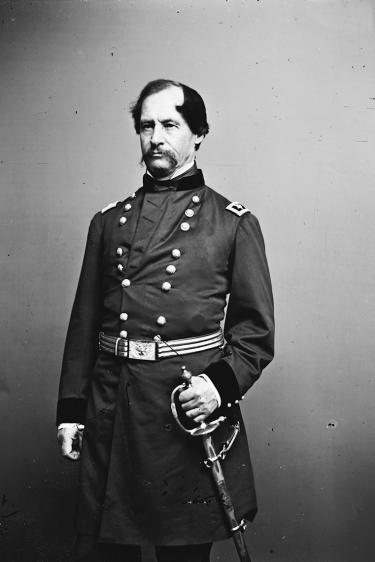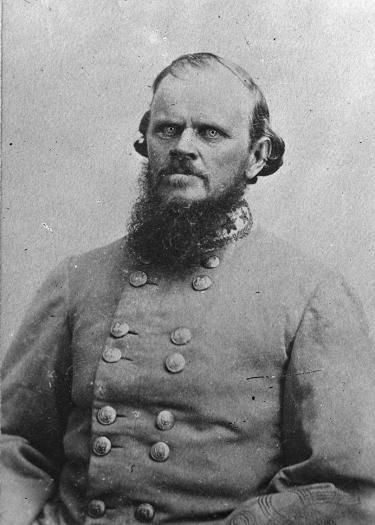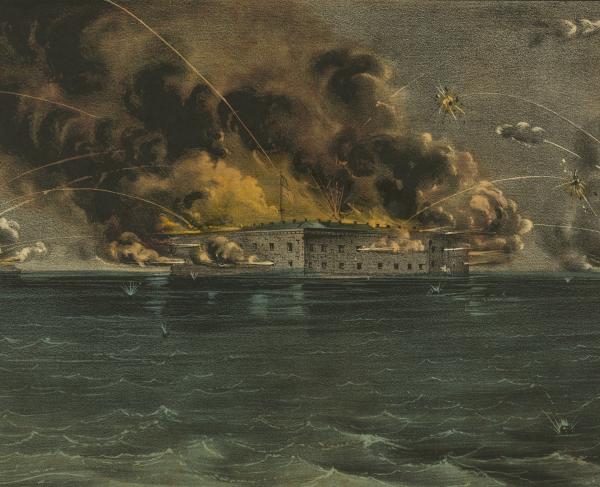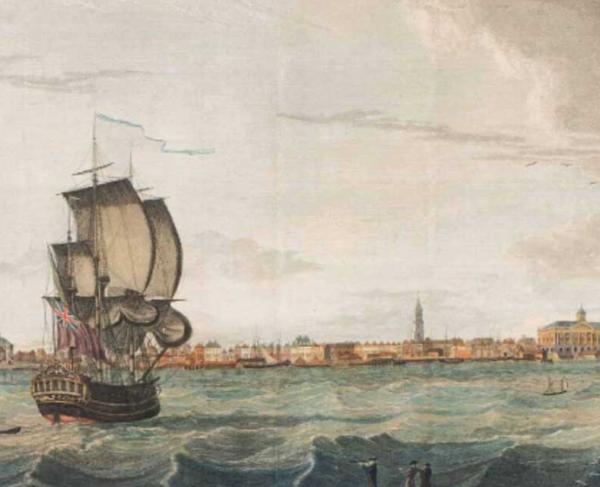The Battle of Secessionville

BY WILLIAM J. HAMILTON, III
The Federal army came close to capturing a vital position on James Island in June 1862, but Federal General Benham's poor planning and the timely arrival of reinforcements resulted in a victory for the outnumbered Confederates.

In the spring of 1862, Charleston Harbor was in the grips of the Federal Navy's blockade, they were trying to find a way to land troops to assault Charleston by land. A slave, Robert Smalls, who was a pilot aboard an inland steamer, the PLANTER, stole the ship on May 12th and ran it past the Confederate forts out to the Federal fleet blockading Charleston harbor. With the ship, he also brought news that the Confederates had abandoned Cole's and Battery Islands. This opened the way for Federal troops to be landed on the southeastern end of James Island, and the path to attempt an assault on Charleston.
Major General David Hunter was in command of the Federal forces for the Department of the South. He had already planned to attack Charleston from the south, and the opportunity was now at hand. He assembled and landed two divisions supported by Federal gunboats on the southeastern end of James Island on the 2nd of June, from here he had planned to advance toward Charleston along the Stono River. Placed in charge of the Federal forces was Brig. Gen. Henry W. Benham; his left flank division commander was Brig. Gen. Horatio G. Wright, commanding three brigades (3100 men); his main assault force was commanded by Brig. Gen. Isaac I. Stevens having two brigades totaling 3200 men.
Meeting light resistance through several skirmishes between June 2 and June 12, Hunter was convinced that he was outnumbered and needed more men before making any further assaults. Benham was left with the instructions from Hunter, "You will make no attempt to advance on Charleston or to attach Fort Johnson until you are largely reinforced or until you receive specific instructions from these headquarters."
Meanwhile, Major Gen. John C. Pemberton, commander of the Confederate forces defending Charleston, seeing that the Federal preparations for advancement onto James Island was underway, redeployed three batteries to the island and ordered the additional building of earthworks to defend the approaches up the island. He placed Brig. Gen. Nathan George Evans, a South Carolinian, in command of the James Island defenses.

One of the new earthwork defenses ordered to be built was a fort at Secessionville. In command of this fort was Colonel T. G. Lamar, with his 750 men. The fort was built in a rough shape of an "M", bordered on each side by marsh. The nine cannon defending the fort consisted of: an 8-inch Columbiad in the center flanked on either side with a 24-pounder rifled gun, a 24-pound smoothbore, and an 18-pounder. At another battery to his northern flank he had an additional two 24-pounders; these two guns had not received their gun crews. Within a two hour march, Gen. Evans had placed in reserve three regiments of infantry (2000 men), to be used if necessary to support any action on the island.
The stage was set for the Battle of Secessionville. On the 15th of June Gen. Benham laid plans for the Union forces to make an early morning surprise attack on the Secessionville fort, a "reconnaissance in force" as he so called it. He would use approximately 3500 of his troops to make a frontal assault before daybreak, attacking to two structured waves. During that day and throughout the night Col. Lamar had his troops working on shoring up the fort's defenses. Col. Lamar finally dismissed his men at 4:00am. By this time the union forces comprising the 8th Michigan, the 7th Connecticut, 28th Massachusetts and 79th New York Highlanders were on the move, supposedly at the double-quick, advancing on the fort. However, advancing through the darkness, the troops had to negotiate through two hedge rows and open cotton fields now knee-deep in weeds. This resulted in breaking up the initial federal lines and slowing the advance. As the field narrowed approaching the fort the left side of the union front was pushed into the marsh and got bogged down in the mud. It also compressed the Union center, slowing the advance such that the second wave ran into the first complicating the advance even more.
The Confederate advanced pickets were overrun about 5:00am, this activity alerted the defenders. Col. Lamar mounted the parapet to observe the Union front about 700 yards and closing. He immediately dispatched couriers to Gen. Evans, who was five miles away at Fort Johnson with the reserves. As the defenders rushed to their stations, Col. Lamar took personal command of the 8-inch-Columbiad. The Union lines were within two hundred yards of the fort, Lamar order the Columbiad to fire; grapeshot, nails, iron chain and glass blasted from the cannon directly at the Union center, tearing a great hole through the Federal lines. The Battle of Secessionville had commenced.
Col. Lamar sharply ordered all gun commanders into action and moved the infantry into place firing volleys as they came onto line. The 8th Mich. on the Union right, was now clambering up the face of the fort followed by the 7th Conn. troops and soon after the 28th Mass. The arrival of Confederate reinforcements drove the Federal assault force back from the parapet when the Confederate defense was on the verge of collapse due to casualties on the critical gun crews. The Federals came under severe fire from three sides as they advanced up the fort walls, only to be ordered to fall back to regroup after suffering heavy casualties. Meanwhile the 79th NY on the Union left actually mounted the fort's parapet and were engaged in hand-to-hand combat with the Rebs, when the Union artillery, located at the River's house, opened fire on that fort breaking up the Union attack and forcing the 79th to withdraw. As the first Federal wave collapsed and retreated they hampered the second wave from attacking.
The Federals fell back to the protection of the hedge rows to reformed their lines. They were to make two more unsuccessful assaults before a general withdraw was ordered. While the main assault was taking place the 3rd New Hampshire was attempting a flanking maneuver from the federal left. Their assault brought them to within several yards of the flank of the fort, but they could not make a full assault due to the water and pluff mud that proved to be impassable. They proceeded to assault the fort from across the marsh driving the defenders from the parapets. The two 24-pounders Lamar set up on his right flank were still silent, even though the new gun crews were on line. Lt. Col. Ellison Capers of the 24th SC infantry was sent up to the position to determine the problem. The gun crew, although an artillery unit, had never been trained in firing a cannon before and did not know what to do. Capers sprang into action loading and firing the piece himself, while training the gun crew. Meanwhile 250 men of the 4th LA Battalion arrived from their encampment 2-1/2 miles away to sure up the confederate flank and pour a decimating fire into the 3rd NH troops, causing the Union force to fall back.
By 9:00am the Battle was over. The Federals had sustained 689 casualties, of which 107 dead. Whereas the Confederates realized 207 casualties with 52 killed. Had the Federals captured Battery Lamar they would have flanked the harbor defenses and might have forced the abandonment of Charleston by the Confederacy, cut the Atlantic Coast Line Railroad and established a base for operations into the interior which might have ended the war two years sooner.


